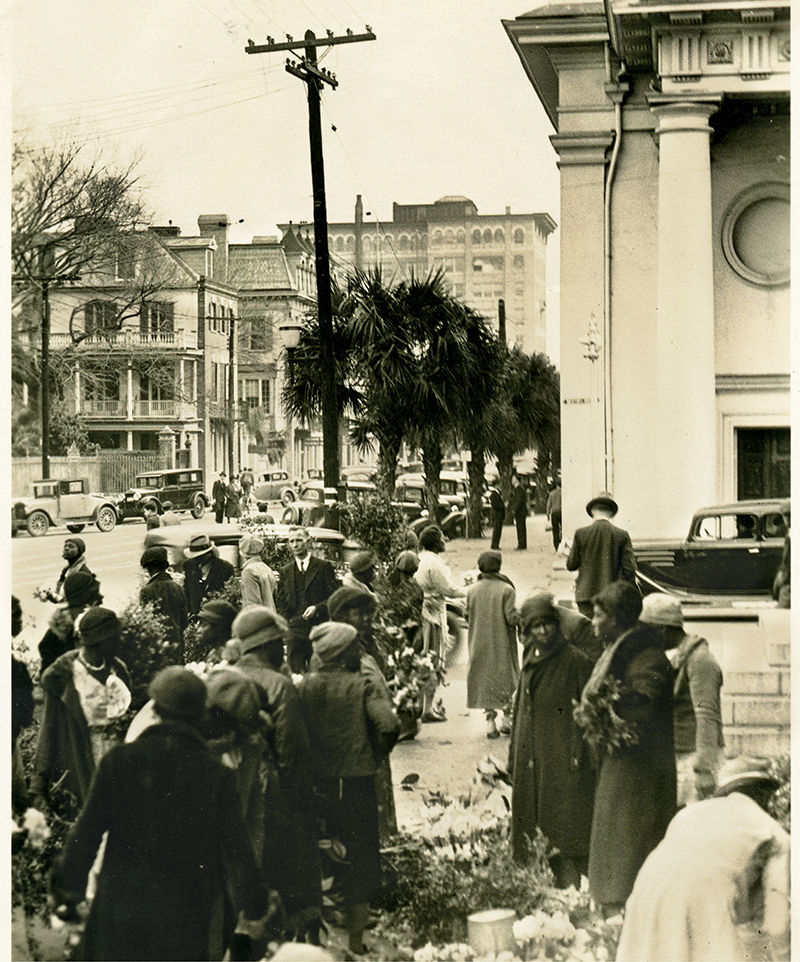
Amid the bustle outside the US Post Office at the intersection of Broad and Meeting streets in 1934, Morton B. Paine snapped this photo of vendors peddling flowers and holiday greenery to homemakers and visitors. In the late 19th century, “the children and grandchildren of former slaves who worked on Mount Pleasant Plantations” began taking a ferry across the Cooper River to downtown Charleston to market their “flowers, wild herbs, and elixirs” to the larger community, according to Joyce V. Coakley in her book, Sweetgrass Baskets and the Gullah Tradition. These “flower ladies” garnered support from many white housewives who bought their wares, but other people complained about the women’s sales tactics and said they blocked the streets. This led city officials in 1944 to paint a white line to limit their turf. Crossing it risked being chased by officer “Fast Foot Brown” or having their pay docked $10 (a week’s salary, for many), writes Coakley. Despite various other restrictions, the flower ladies persisted and became iconic, appearing in magazines, such as National Geographic in 1939, and on postcards. Today, African American artisans still sell their goods—such as sweetgrass baskets and popcorn-berry wreaths—at the Four Corners of Law.